
Ogimachi Village: Exploring the Hidden Gem of Japan’s Countryside
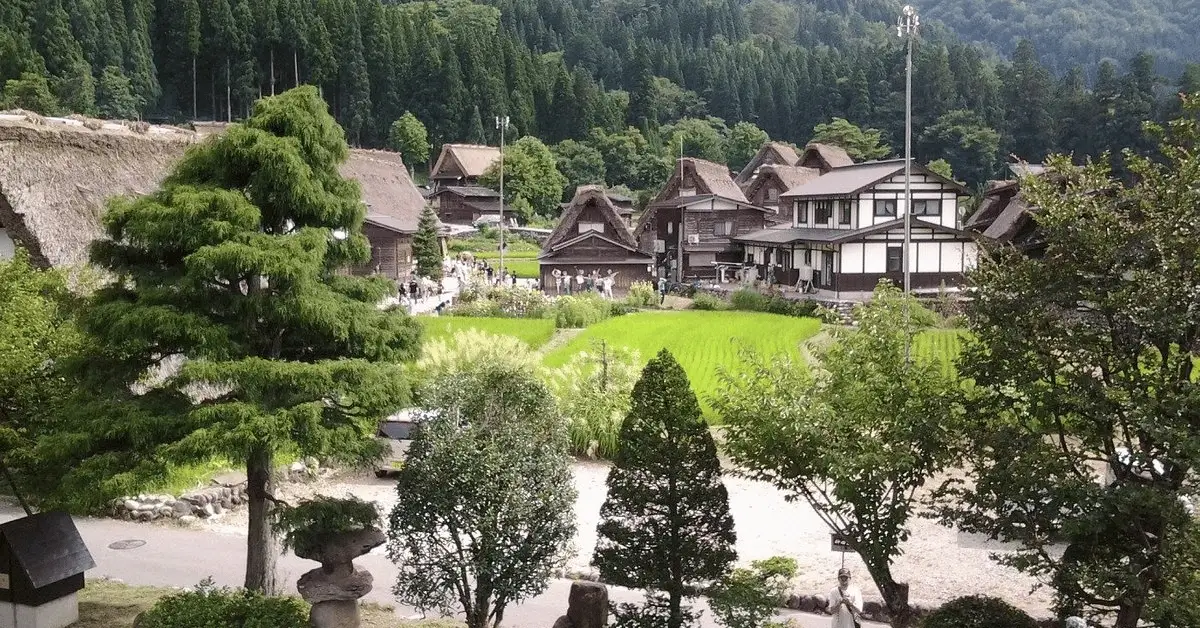
Table of Contents
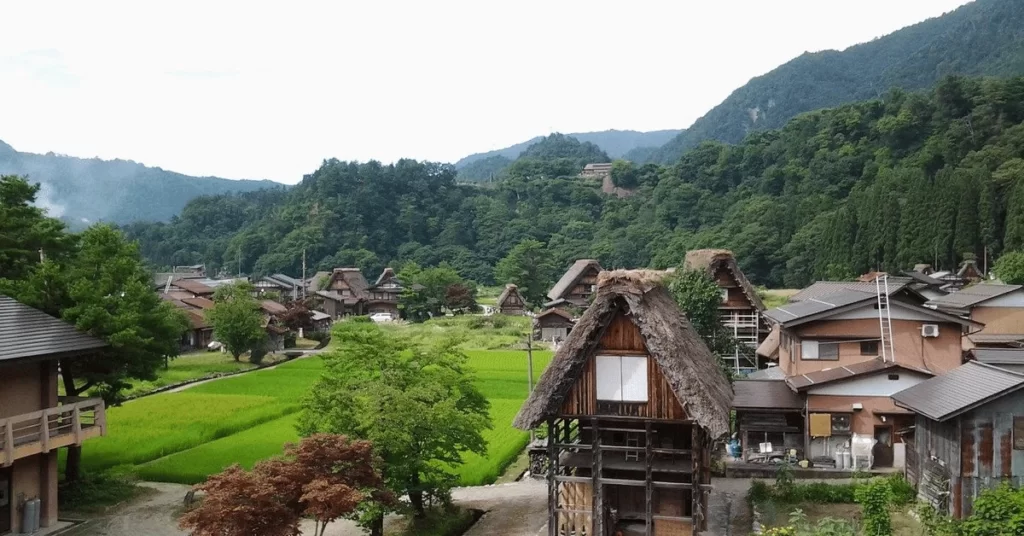
Nestled in the heart of the Japanese Alps, Ogimachi Village is a picturesque destination that offers a glimpse into traditional Japanese rural life. With its thatched-roof houses, pristine landscapes, and rich cultural heritage. Let’s embark on a virtual journey to discover the enchanting beauty of Ogimachi Village and everything it has to offer.
Ogimachi Village is a traditional Japanese village located in the Shirakawa-go region of Gifu Prefecture, Japan. It is renowned for its picturesque scenery and unique Gassho-zukuri style houses, which have steep thatched roofs resembling two hands clasped together in prayer (gassho). The village’s name, Ogimachi, means “large village” in Japanese.
The Gassho-zukuri houses were constructed using a traditional architectural technique that allowed them to withstand heavy snowfall during the winter months. This style of building is recognized as a UNESCO World Heritage site, and Ogimachi Village attracts numerous visitors who want to experience the charm of rural Japan and its historical heritage.
The surrounding landscape adds to the village’s allure, with lush greenery in the spring and summer, vibrant autumn colors, and a magical winter atmosphere when the village is covered in snow. The combination of unique architecture and stunning natural beauty makes Ogimachi Village a popular destination for both domestic and international tourists.
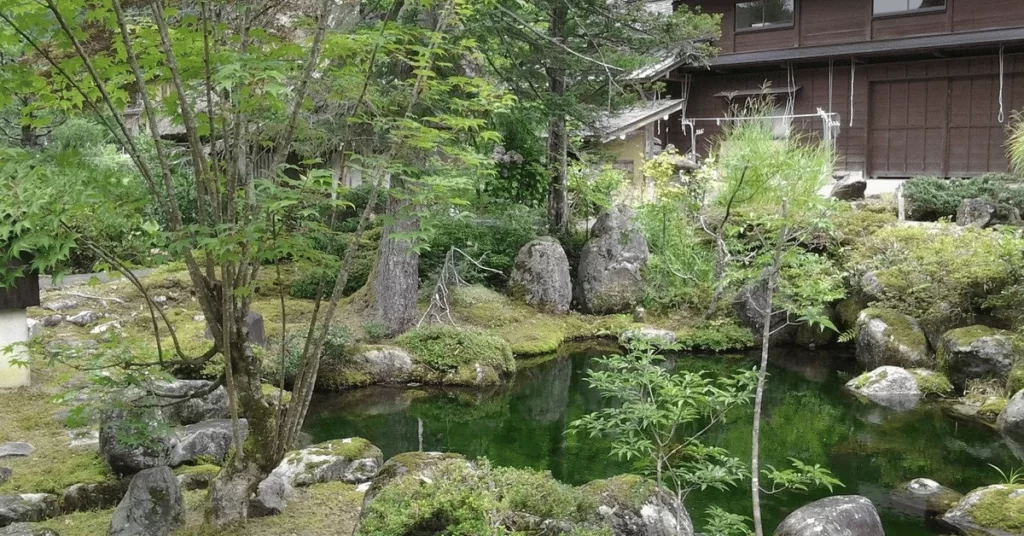
Quick Information about Ogimachi Village
| Location | Gifu Prefecture, Japan |
|---|---|
| Population | Approximately 600 residents |
| Area | Approximately 18 square kilometers |
| Climate | Subarctic climate with snowy winters |
| Language | Japanese |
| Time Zone | Japan Standard Time (UTC+9) |
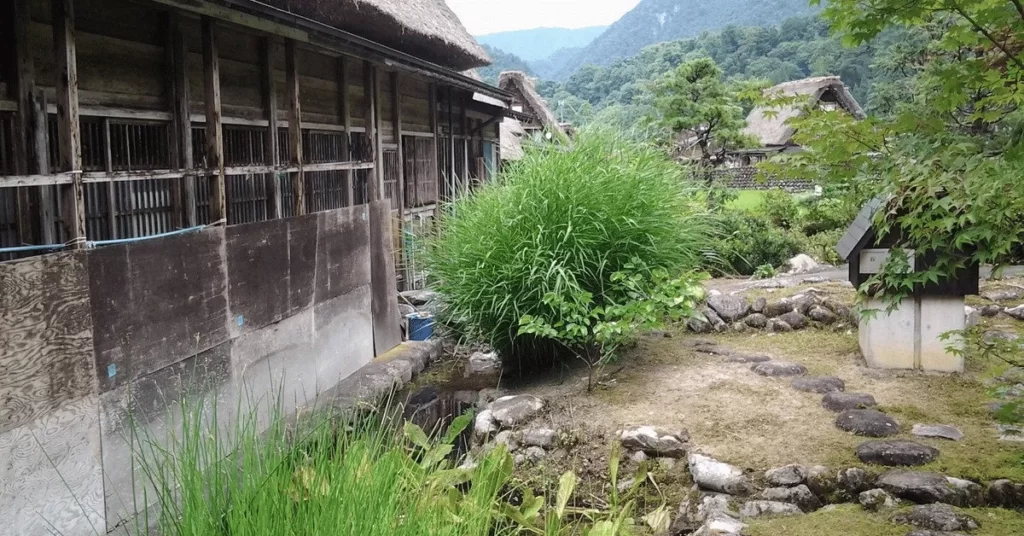
Also Read – Hot Springs Heaven: Unraveling The Wonders Of In Hells Of Beppu – Japan
Best Time to Visit Ogimachi Village
| Season | Highlights |
|---|---|
| Spring | Cherry blossoms, mild weather, and lush greenery. |
| Autumn | Vibrant autumn foliage is ideal for photography. |
| Winter | Stunning snowscapes and traditional gassho-zukuri houses covered in snow. |
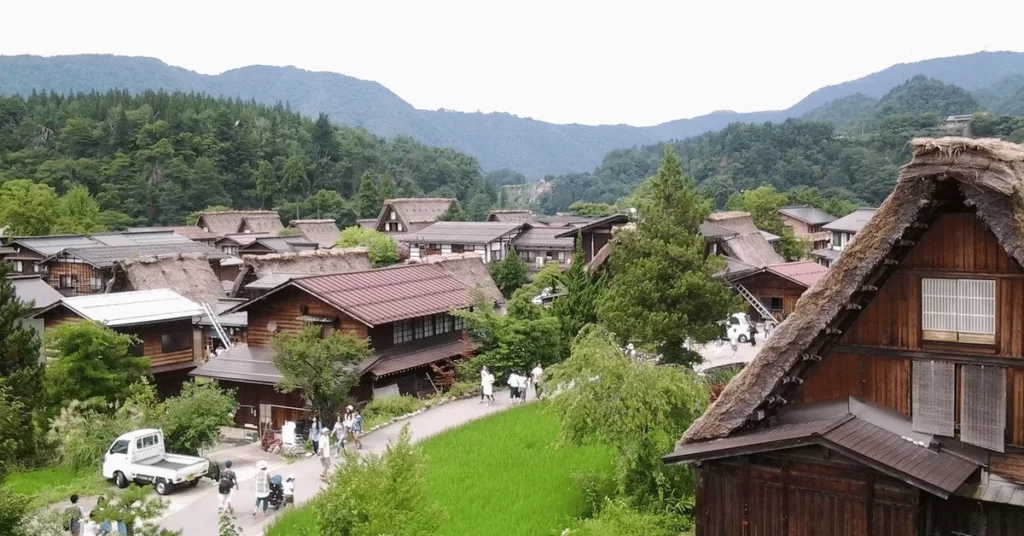
Ways to Reach Ogimachi Village
Ogimachi Village is well-connected and can be accessed through various transportation options:
By Train: Take the JR Hida limited express train from Nagoya to Takayama, and then transfer to a Nohi bus bound for Shirakawa-go. Ogimachi Village is a short bus ride from there.
By Bus: Several bus companies operate direct routes from major cities like Tokyo, Osaka, and Kyoto to Ogimachi Village.
By Car: Renting a car is an excellent option for those who prefer a more flexible travel experience. The village is accessible via the Tokai-Hokuriku Expressway.
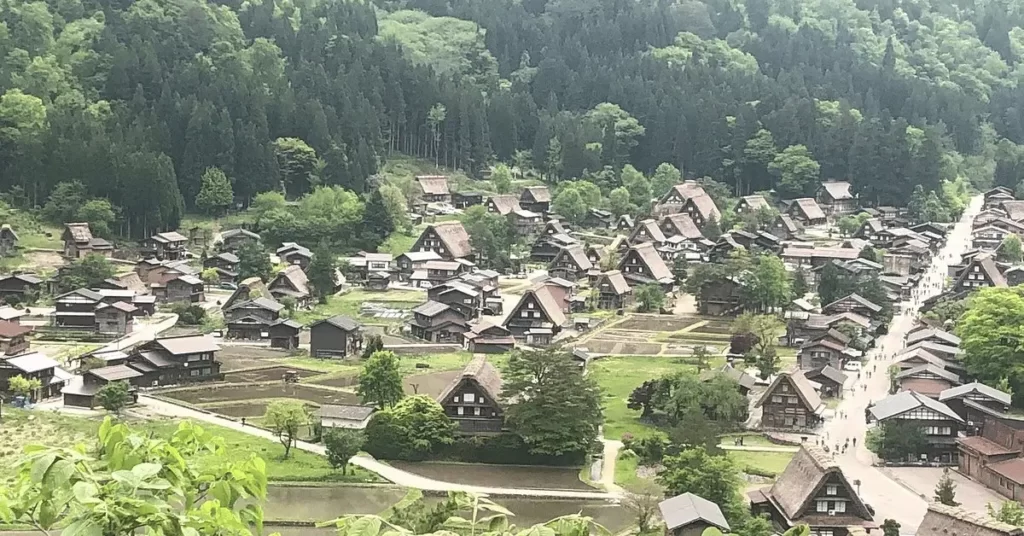
Activities to Do in Ogimachi Village
Explore Gassho-zukuri Houses: Walk through the village and admire the traditional Gassho-zukuri houses with steep thatched roofs, a unique architectural style designed to withstand heavy snowfall.
Shirakawa-go Observatory: Visit the observatory for panoramic views of Ogimachi Village against the backdrop of the Japanese Alps.
Local Workshops: Participate in various traditional workshops, including pottery, silk weaving, and indigo dyeing.
Hiking: Discover the surrounding natural beauty by hiking through the lush forests and scenic trails.
Festivals: If your visit coincides with the winter months, don’t miss the magical illumination festivals held in Ogimachi Village.
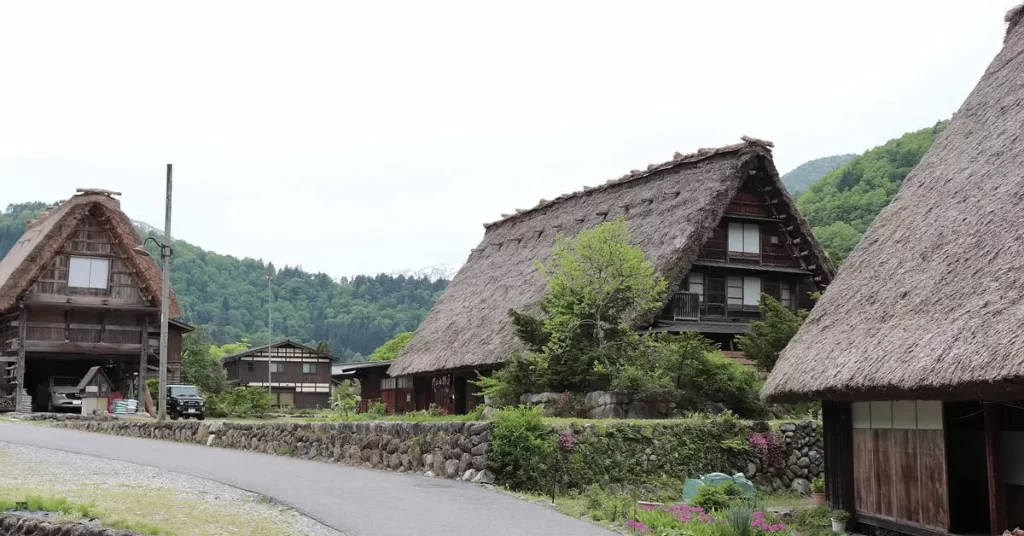
Food Options in Ogimachi Village
In Ogimachi Village, you can find several food options that allow you to savor traditional Japanese cuisine and local specialties. Here are some of the food options you might encounter during your visit:
Local Specialty Dishes: Ogimachi Village is known for its regional specialties, and one of the must-try dishes is “Hoba Miso.” This dish typically consists of miso paste, vegetables, and mushrooms grilled on a magnolia leaf. It’s a unique and flavorful culinary experience.
Soba Noodles: You can find delicious handmade soba noodles in the village. Served hot or cold, these buckwheat noodles are a popular and nutritious choice.
Local Snacks: Various shops in the village offer an array of local snacks and sweets. Try “Sarubobo,” a cute red doll-shaped confection made from rice flour, or sample some “Goheimochi,” a grilled rice cake coated in sweet soy sauce.
River Fish: As the village is surrounded by mountains and rivers, you might find fresh river fish on the menu. Trout and char are commonly served in local restaurants.
Traditional Japanese Cuisine: Some inns and restaurants in Ogimachi offer traditional multi-course Japanese meals known as “kaiseki.” These elaborate meals often feature seasonal and locally sourced ingredients.
Local Sake: Gifu Prefecture is known for its sake production, and you can find some local breweries in and around Ogimachi Village. Enjoy a taste of regional sake to complement your meal.
Tea Houses: Tea houses and cafes offer a pleasant break during your exploration. Try some Japanese green tea and enjoy the serene atmosphere.
Souvenir Snacks: Don’t forget to check out the shops for edible souvenirs. Pick up some local treats to take home and share with friends and family.
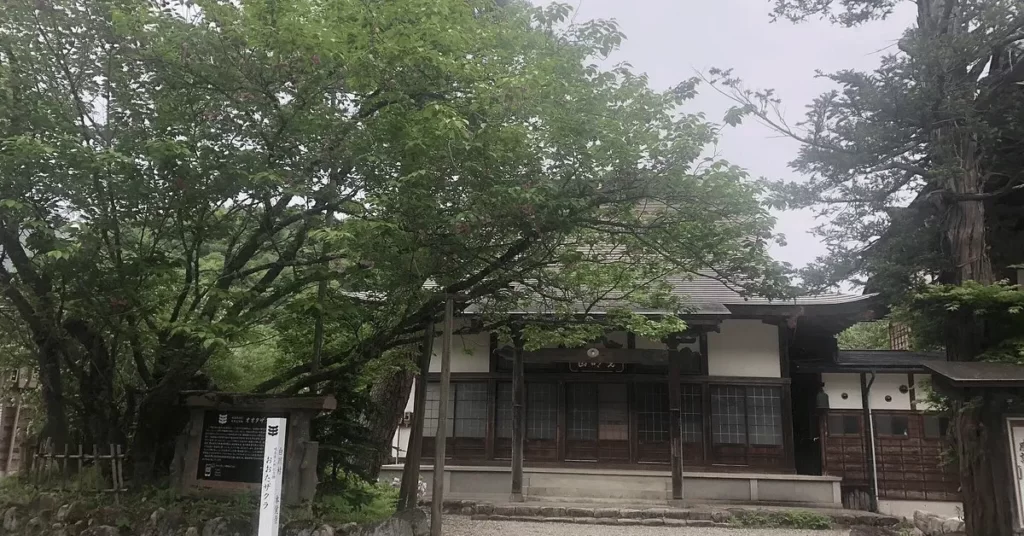
Must Read – Journey Through Time: Exploring The Enchanting Hida Folk Village
Accommodation Options in Ogimachi Village
In Ogimachi Village, you can find a range of accommodation options that allow you to experience the traditional charm of the area. Here are some types of lodging you might consider during your stay in the village:
Gassho-zukuri Ryokan: Some of the traditional Gassho-zukuri houses have been converted into cozy and charming ryokans (traditional Japanese inns). Staying in a Gassho-zukuri ryokan provides an authentic experience, as you sleep in a historic building with a distinctive thatched roof. The Ryokans usually offer traditional Japanese-style rooms, futon bedding, and delicious kaiseki meals featuring local ingredients.
Minshuku: Minshuku are family-run guesthouses that offer a more budget-friendly option compared to ryokans. While they may not have the same level of luxury, minshuku provides a warm and welcoming atmosphere, and you can enjoy homemade meals and interact closely with the local hosts.
Modern Hotels: Some modern hotels and lodges can be found near Ogimachi Village, offering a more contemporary accommodation experience with Western-style rooms and amenities. These hotels often provide a comfortable stay with a blend of Japanese and international influences.
Temple Lodgings (Shukubo): In nearby areas, you might find temple lodgings known as “shukubo.” These accommodations allow visitors to experience the unique lifestyle of Buddhist monks, participate in meditation or morning prayers, and enjoy a vegetarian Shojin Ryori meal.
Camping: If you prefer a more adventurous stay, camping facilities may be available in or around Ogimachi Village. Camping allows you to immerse yourself in nature and enjoy the tranquil surroundings.
Regardless of your choice of accommodation, staying in Ogimachi Village or nearby areas offers a chance to experience the traditional atmosphere and beauty of the region. Keep in mind that the village is a popular tourist destination, so it’s advisable to make reservations in advance, especially during peak seasons such as spring and autumn when the area attracts many visitors.
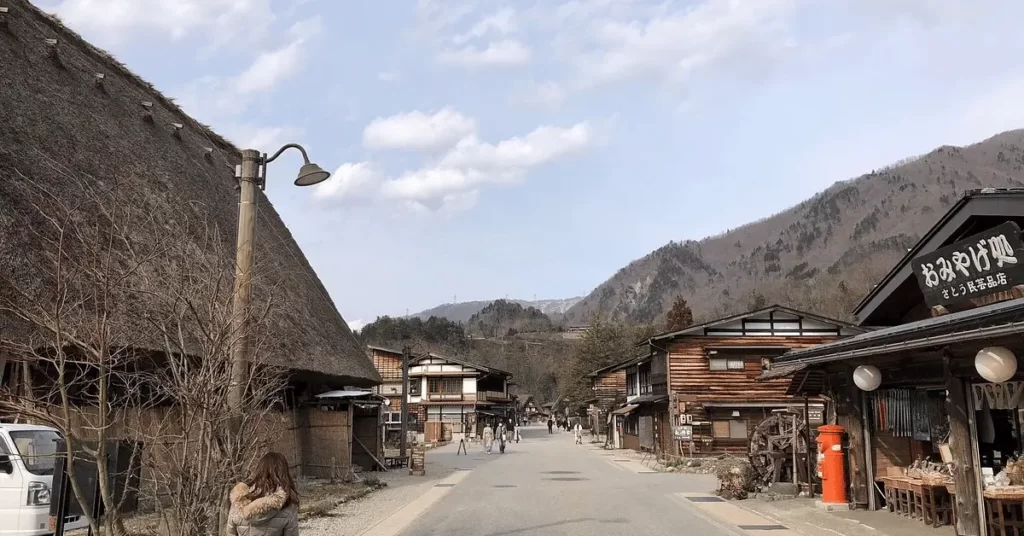
Places to Visit near Ogimachi Village
Gokayama Ainokura: This is another UNESCO World Heritage site situated close to Ogimachi Village. Ainokura is a traditional Japanese village with well-preserved Gassho-zukuri houses. It is smaller and less crowded than Ogimachi, making it a serene and tranquil destination.
Shirakawa-go Observatory: To get a breathtaking panoramic view of Ogimachi Village and the surrounding area, visit the Shirakawa-go Observatory. The observation deck offers stunning vistas, especially during the autumn foliage season.
Hida-Takayama: Located about an hour’s drive from Ogimachi Village, Hida-Takayama is a historic town known for its beautifully preserved streets and traditional architecture. Explore the old town’s merchant houses, visit Takayama Jinya (historic government building), and enjoy the morning market for local produce and crafts.
Hida Folk Village: Situated in Takayama, Hida Folk Village (Hida-no-Sato) is an open-air museum showcasing traditional thatched-roof houses from the Hida region. It offers a glimpse into the local lifestyle and cultural heritage.
Shin-Hotaka Ropeway: Experience stunning alpine views by taking the Shin-Hotaka Ropeway, which takes you up the Hotaka Mountains. Enjoy the breathtaking scenery and hiking trails at the top.
Kamikochi: This pristine and picturesque highland valley in the Northern Japan Alps is a popular destination for nature lovers and hikers. The area boasts stunning mountains, crystal-clear rivers, and beautiful walking paths.
Kanazawa: While a bit farther from Ogimachi Village, Kanazawa is worth a visit if you have additional time. Known for its well-preserved samurai and geisha districts, as well as Kenrokuen Garden (considered one of Japan’s three most beautiful gardens), Kanazawa offers a glimpse into traditional Japanese culture.
Takayama Festival (Takayama Matsuri): If your visit coincides with one of the Takayama Festival events (spring and autumn), don’t miss the chance to witness the elaborate floats, traditional performances, and lively atmosphere of this renowned festival.
Also Read – Discover The Enchanting Kurashiki Bikan Historical Quarter
FAQs
1. Is Ogimachi Village suitable for a day trip, or should I plan an overnight stay?
While a day trip to Ogimachi Village is possible, we highly recommend planning an overnight stay to fully immerse yourself in the tranquil atmosphere and experience the charm of the Gassho-zukuri houses. Staying overnight allows you to witness the village in different lighting conditions, enjoy a relaxing evening, and explore the surrounding areas at a more leisurely pace.
2. Are there any local festivals or events in Ogimachi Village that visitors can participate in?
Yes, Ogimachi Village hosts several traditional festivals and events throughout the year, offering visitors a chance to engage with the local culture. One of the most notable events is the “Ogimachi Village Takayama Festival” held in April, which features lively parades, traditional performances, and vibrant celebrations. Additionally, during certain seasons, the village may organize special events like rice-planting experiences or local craft workshops.
3. Are the Gassho-zukuri houses open to the public, or can we only view them from the outside?
Some Gassho-zukuri houses in Ogimachi Village are open to the public, allowing visitors to step inside and explore their interiors. These houses often serve as museums or cultural centers, providing insights into the traditional lifestyle and history of the region. However, please be mindful of any restrictions or guidelines when visiting, as some houses might be private residences and not open for public entry.
4. Is Ogimachi Village accessible for travelers with mobility challenges or disabilities?
While Ogimachi Village is a historic site with cobblestone paths and some uneven terrain, efforts have been made to make certain areas accessible for travelers with mobility challenges or disabilities. There are wheelchair-friendly pathways and ramps in some places, and many of the major attractions have facilities catering to all visitors. However, please keep in mind that the village’s traditional architecture may present some limitations for full accessibility. It’s advisable to check in advance with specific accommodations and attractions regarding their accessibility features.
5. Can I take photographs in Ogimachi Village, and are there any photography restrictions?
Yes, you are generally allowed to take photographs in Ogimachi Village for personal use. The village’s scenic landscapes and traditional architecture offer fantastic opportunities for photography. However, when visiting specific attractions, such as museums or private houses, there might be restrictions on photography, and it’s essential to respect any signage or guidelines provided by the staff. Additionally, if you plan to take photographs of the local residents, it’s courteous to ask for their permission beforehand out of respect for their privacy and cultural values.






















